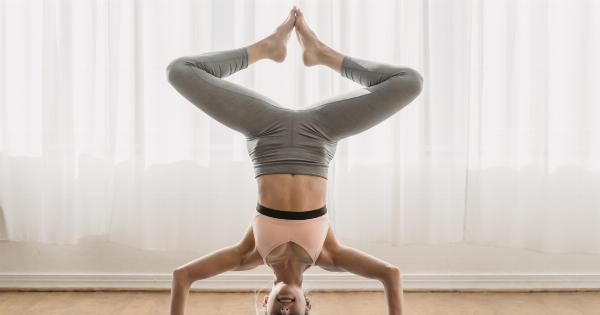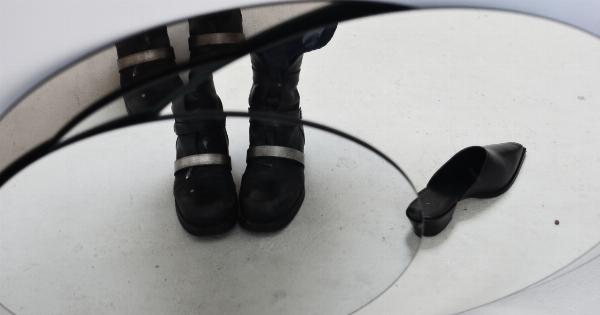When it comes to choosing footwear, comfort is often the primary factor that most people prioritize.
After all, who wouldn’t want to enjoy the feeling of walking in a pair of cozy and cushioned shoes? However, what many aren’t aware of is that there can be hidden dangers lurking in those seemingly comfortable shoes. In this article, we will explore some of the potential risks associated with wearing comfy shoes and how to mitigate them.
1. Lack of proper arch support
One of the major downsides of many comfortable shoes is their lack of proper arch support.
While cushioning may provide immediate comfort, the absence of adequate arch support can lead to long-term foot complications, such as fallen arches, plantar fasciitis, and overpronation. These conditions can cause chronic pain, discomfort, and even affect your overall posture and gait.
2. Increased risk of foot conditions
Wearing comfy shoes that lack proper ventilation and don’t allow your feet to breathe can create a breeding ground for foot conditions like athlete’s foot, bunions, and corns.
Closed-toe shoes made from synthetic materials can trap moisture, leading to the growth of fungus and bacteria. Additionally, shoes that are too tight or narrow can put pressure on your feet, leading to the development of painful conditions like bunions.
3. Impact on posture and body alignment
While comfortable shoes may provide short-term relief, they may have a negative impact on your overall body alignment and posture.
Shoes with excessive cushioning and no structural support can cause your feet to strike the ground differently, leading to misalignment of your ankles, knees, hips, and ultimately your back. Poor body alignment can result in chronic pain and even increase your risk of injuries in the long run.
4. Reduced muscle strength
Another downside of relying too heavily on comfy shoes is the potential reduction in muscle strength. Too much cushioning and support can prevent your feet and leg muscles from getting adequate exercise and stimulation.
Over time, this can lead to weakened muscles, stability issues, and an increased risk of falling or spraining ankles.
5. Hindrance of natural foot movement
Our feet are designed to move dynamically and adapt to different surfaces. However, overly comfortable shoes often restrict natural foot movement.
This lack of flexibility can lead to decreased foot and ankle mobility, weakened arches, and limited calf muscle activation. All of these factors can contribute to foot problems such as flat feet, Achilles tendonitis, and calf strains.
6. Misalignment of weight distribution
Comfortable shoes, especially those with excessively cushioned soles, can disrupt the natural distribution of weight across your feet.
When the pressure isn’t evenly distributed, it can cause certain areas of your feet to bear more weight than they should. This imbalance can result in foot pain, discomfort, and even the development of conditions like neuromas and calluses.
7. Dependency and habit formation
If you consistently wear ultra-comfortable shoes, you might find it difficult to adjust to footwear with proper support and structure. Your feet may become dependent on the cushioning and lack the ability to adapt to flatter, more supportive shoes.
This dependency can make it challenging to switch to shoes that promote healthier foot mechanics in the future.
8. Lack of durability
Many comfy shoes are made from soft, plush materials that prioritize immediate comfort over durability. While this may be fine for occasional use, relying on these shoes as part of your everyday footwear can lead to quicker wear and tear.
The lack of sturdy construction and support may result in the need for frequent shoe replacements, which can be both inconvenient and costly in the long run.
9. Impact on overall foot health
Ultimately, consistently opting for overly comfortable shoes can have a substantial impact on your overall foot health.
The combination of reduced muscle strength, misalignment, foot conditions, and dependency on cushioning can lead to chronic pain, decreased mobility, and a decreased quality of life.
10. How to mitigate the risks
While it’s important to be aware of the potential dangers associated with comfy shoes, it doesn’t mean you have to sacrifice comfort completely. Here are some tips to mitigate the risks:.
– Opt for shoes that provide both comfort and proper arch support.
– Choose footwear made from breathable materials to prevent moisture accumulation.
– Ensure your shoes are the correct size and have enough room for your toes to move freely.
– Gradually transition to shoes with more support and structure to allow your feet to adapt.
– Consider using orthotic inserts or insoles for added arch support and cushioning.
– Rotate your shoe choices and avoid wearing the same pair every day.
– Perform foot exercises and stretches regularly to maintain muscle strength and flexibility.
– Seek professional advice from a podiatrist or foot specialist if you experience chronic foot pain or discomfort.
By being mindful of the potential dangers and taking proactive steps to mitigate risks, you can enjoy the best of both worlds – comfortable shoes and optimal foot health.




























